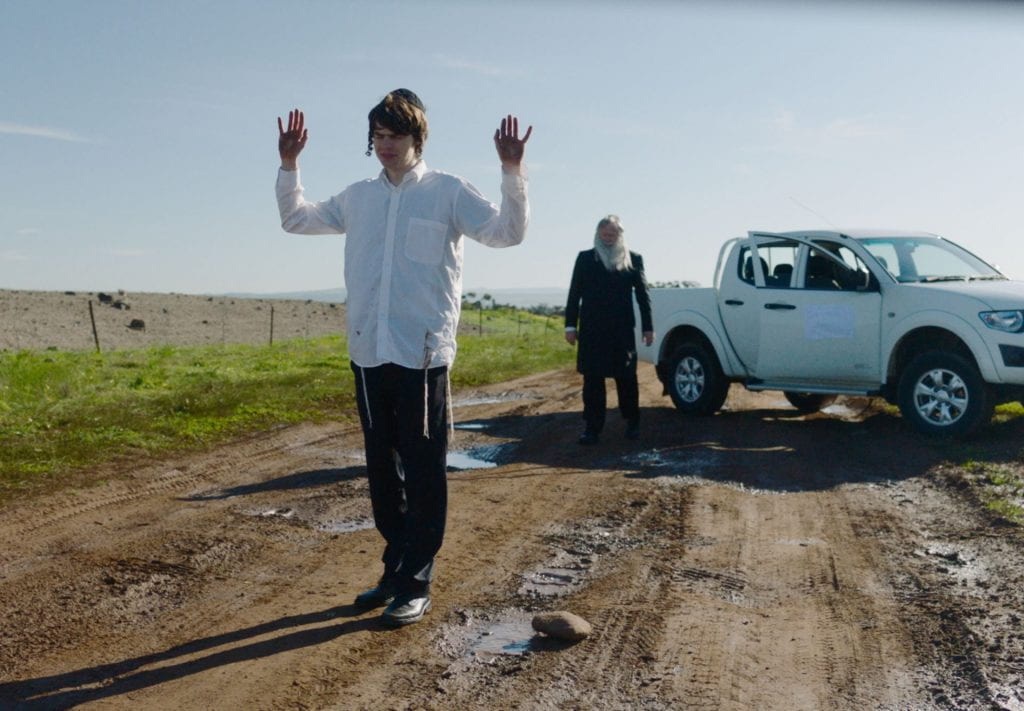VCA Digital Archive: why so queer?

The VCA Digital Archive is a living audiovisual record of student films that date back to 1966. The articles in this series respond thematically to the depth and breadth of the collection. Enjoy!
By Xu Xiong
Film critic Ruby Rich coined the term New Queer Cinema to identify the new avant-garde filmmaking of the 1990s that unapologetically celebrated non-normative sexualities and radical formal experimentation. But the status of queer cinema has changed since then.
Despite having LGBTQI protagonists, many recent films (Call Me by Your Name, Love, Simon, Bohemian Rhapsody) conform to a conventional narrative and aesthetic to appeal to a more mainstream audience. To quote the writer E. Alex Jung: “They’re safe, often boring, and sentimental, following familiar emotional arcs to tell a ‘universal story’.”
Films discussed in this article from the VCA Digital Archive reject the mainstreaming of queer representation and explore the multifaceted perspectives of queer identities thematically and stylistically.

These works value edginess, ambiguity, and daring innovation. They ask questions without indicating a clear answer, and invite us to engage with these issues culturally, socially and politically.
Devil Wears A Suit (dir. Eli Mak, 2016) and Tasty (dir. Meaghan Palmer, 2016) are two brilliant shorts exposing the violence against queer people.
What I love about these films is their empathetic power underpinned by highly personal narrative, while possessing a strong sense of activism. Devil’s protagonist Adam, a Jewish boy, is torn apart by his homosexual desire and his close-knit religious community, while struggling with a difficult decision about whether to “cure” his homosexuality.
Adam’s emotional turmoil is effectively communicated by the film’s audiovisual language. The editing that puts together shots of Adam, a Christian girl and a Muslim boy experiencing a forced “gay cure” is exceptionally powerful. It unveils the horror of conversion therapy as a gender-based violence in different cultures in the name of religion, science, and community.
Based on a true event, Tasty re-enacts a notorious police raid in a gay club of the same name in Melbourne in 1994. The restless teenager Ben meets a guy by the beach who invites him to Tasty, a gay club in the city that promises acceptance and inclusion. But the raid changes everything.
While being stripped and interrogated by the police, a close-up of Ben staring at the camera in misery seems to be a silent protest. This is an important moment in the film that directly addresses the audience, mobilising our empathy with a victim of homophobia. Through Ben’s discovery of his sexuality, Tasty portrays an abuse of police power towards the queer community in the 1990s in Australia.
Animation films are a noteworthy trend in queer representation. Overgrow (dir. Jennifer Crow, 2016), a hand-drawn 2D animation, tells a sweet love story between two girls who live in a surreal world full of flowers. The roses and plants symbolise their emotions growing out of control as their friendship blossoms into romance.
The girls are surrounded with pink bubbles and roses — a sign of a safe feminine space. The distinct visual style resembles the fairy-tale illustration. It would be fantastic to have more LGBTQI-themed fairy tales, so that young audiences can understand the diversity of gender and sexuality.
Another animation film, Virion (dir. Glynn Urquhart, 2017) ridicules a contemporary romantic relationship between two men. The focus is not necessarily on sexuality but relationships in general. The film mimics the style of a science demonstration video and represents modern day relationships as being similar to a viral infection. In short, the relationship never lasts long.
Unlike Tasty, Virion does not show the victimisation of its gay characters and represents the universal challenge of relationships regardless of being gay or straight.
MyMy (dir. Anna Helme, 2014) is an experimental short film hybridising the styles of sci-fi, documentary and video art. A young trans person uses a cyber-feminist CD-ROM to create a cyborg twin but the other self is flawed and its self-consciousness is beyond the protagonist’s control. The film explores the possibilities of creating a queer identity in the post-human age that does not fit in any existing categories.
It rejects not only the traditional gender binary but also identity politics. This approach takes a radical departure from gender essentialism in which biological sex and gender are integrated, and one’s gender role is a derivative of one’s biological sex. MyMy’s theme, narrative, and style is pioneering in queer cinema, searching for new languages and significations to articulate genderqueer.
It is crucial to embrace the messiness and ambiguity of queer cinema as it often cannot be clearly defined and categorised. Queerness that does not neatly fit in patriarchal gender roles is potentially subversive as it deconstructs the dominant discourse shaping heteronormative representations.
VCA students are not afraid of experimenting with new ideas and technologies – and their works, filled with passion and creativity, continuously extend the boundaries of queer cinema.
Xu Xiong is a graduate of the Master of Arts and Cultural Management (Moving Image Specialisation) at the University of Melbourne. He has previously worked with the Human Rights Arts and Film Festival as the feature film programmer. Currently based in Guangzhou, China, he is working as a programmer, critic, and education counsellor.
The VCA Digital Archive series of articles was commissioned as part of a grant from the University of Melbourne, Student Services Amenities Fee. University of Melbourne staff and students and some industry people dipped into the FTV archive and watched films based on themes. The idea was to use the archive as stimulus to curate and create. Some responses are completely creative, others are reviews, others are word art pieces.
The full collection will be available for research from mid-2019. In the meantime you can find a selection of more than 100 films live on our YouTube page. To find out more, visit the VCA Digital Archive Project Page.